Peripheral or Leg Artery Disease
What symptoms do narrowing of the leg arteries produce?
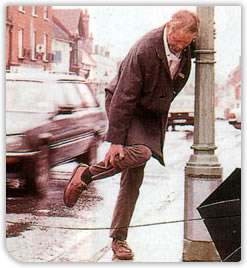 When muscles are used they need an increased flow
of blood and oxygen to do the extra work. When there is a narrowing of the artery the supply cannot
keep up with the demand. The worse the narrowing or blockage and the harder the muscles work the sooner the muscles run short of oxygen. For example the
muscles will run out of oxygen more quickly when someone tries to walk quickly up a hill than when they walk slowly down one. When the muscle runs out
of oxygen it cramps up aches and eventually the person has to stop. The commonest place to be affected is the calf muscle but it can also occur in the
thigh or buttock.
When muscles are used they need an increased flow
of blood and oxygen to do the extra work. When there is a narrowing of the artery the supply cannot
keep up with the demand. The worse the narrowing or blockage and the harder the muscles work the sooner the muscles run short of oxygen. For example the
muscles will run out of oxygen more quickly when someone tries to walk quickly up a hill than when they walk slowly down one. When the muscle runs out
of oxygen it cramps up aches and eventually the person has to stop. The commonest place to be affected is the calf muscle but it can also occur in the
thigh or buttock.
When people stop walking pain rapidly wears off (in a few minutes). The medical term for this is intermittent claudication. This is rather like angina only affecting the leg muscle rather than the heart. Rarely the blockages get so bad that pain comes on even at rest. This is a sign of serious disease but luckily it is rare. For most people the problem will be a nuisance which stops them doing as much as they would like but is not dangerous to them. For most people the long term outlook for intermittent claudication is good.
Five years after claudication starts 50% will have improved, 25% will be the same and 25% will have got worse, 5% will have needed something doing to their arteries and 1% will have needed an amputation.
What happens to the arteries?
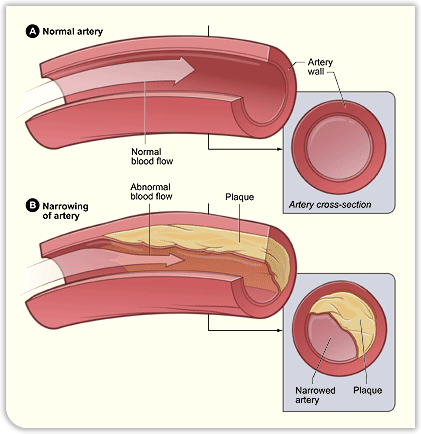
Fatty deposits (atherosclerosis) build up in the wall of the arteries (see diagram above) which narrows them and restricts the amount blood that can flow through them. The pictures below shows a human artery with fatty deposits reducing the size of the hole through which blood can flow.
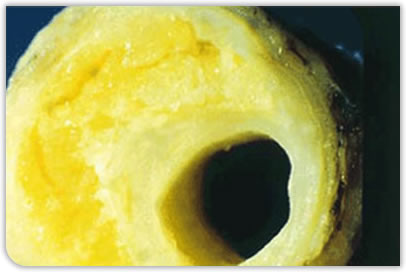
This picture shows an artery in which fatty deposits leave only a small hole through which blood can pass.
Why do people get arterial disease?
The risk factors for arterial disease are:
- Smoking
- Diabetes
- High blood pressure
- High fat levels in the blood (cholesterol)
- Family history
- It is commoner with increasing age.
Arterial disease tends to affect all the arteries in the body so that people with arterial disease of the legs are more likely to get arterial disease of the heart (angina, heart attack) or of the brain (stroke). The good news is that anything you do to help the leg arteries will also help all the other arteries.
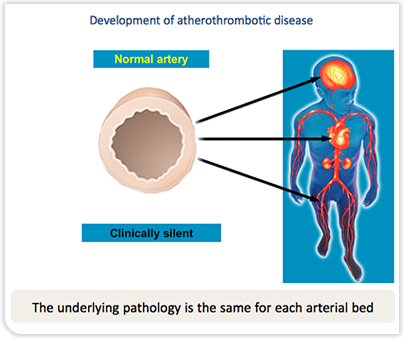
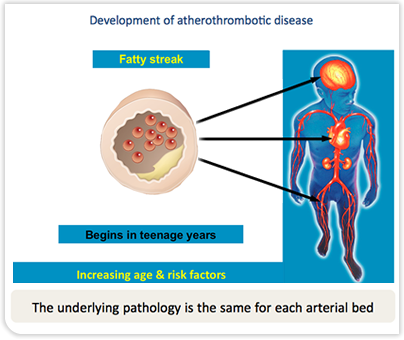
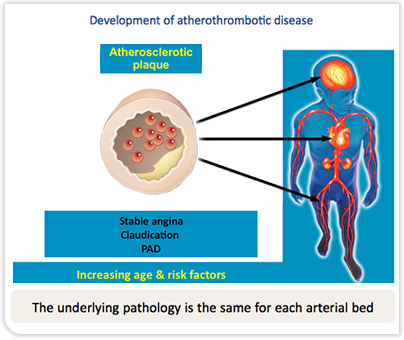
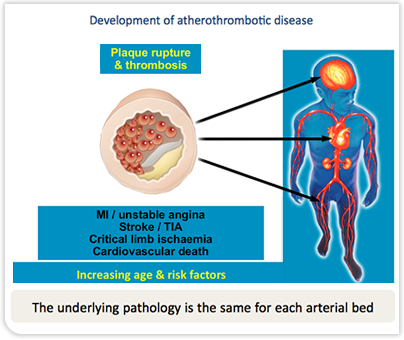
 Contact Me
Contact Me